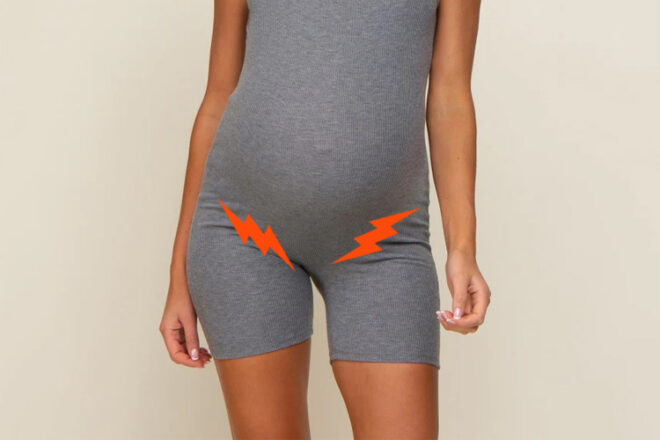
You’ve been patiently counting down to your due date and it’s come … and gone. Welcome to the first rule of parenting: babies do everything in their own sweet time – and that includes being born.
Sometimes bubs need a little extra nudge to read their eviction notice properly, and that’s when medicos start talking about inductions. There are a few different ways your obstetrician may choose to induce your labour, and it all depends on personal circumstances.
Mum’s Grapevine chatted to specialist Sydney obstetrician Dr Gary Sykes about how each type of induction is performed, and why.
Types of induction
Artificial Rupture of Membranes (ARM)
Inducing labour can be done by artificially rupturing the membranes, which is basically breaking the waters. It usually means being on an IV that contains syntocinon (a hormone drug that will cause the uterine muscle to contract). This sort of induction will be enough if the cervix is ‘favourable for induction’. This means when the doctor does an internal check:
- The cervix is about 3+cm dilated
- 1cm or less thick, and
- Baby’s head is engaged and well applied to (pressing against) the cervix
It’s common for a woman who has previously had a vaginal birth (especially efficient, quick and uncomplicated labours) to be favourable to induction.
To do an ARM the cervix needs to be open enough to allow the obstetrician to insert a finger. If it isn’t, the ARM can’t happen, leaving three options:
- Defer the induction and repeat the examination in about a week. I often find the cervix is then ‘open’ and it is a much easier induction.
- Do an elective cesarean section. That is occasionally decided the best option. There needs to be a careful discussion with the patient and the patient’s support of the decision.
- Cervical ripening. Prostaglandin gel is inserted into the vagina to ripen the cervix. This will take hours to work. There are different regimes according to which prostaglandin gel is used. Sometimes the cervix is still closed after prostaglandin gel and so induction cannot go ahead. Usually, then a cesarean section for a failed induction is done. You should be told this may happen before the cervical ripening starts. Another option is to send the patient home and repeat the ripening process at least 24 hours later in the hope it will respond on the second attempt.
Prostaglandin Gel
Sometimes before being able to rupture the membranes, the doctor will have to prepare the cervix to get it to this point. It’s called ‘inducible but unfavourable for induction’, and this means while a finger can be inserted, the cervix is still long (or uneffaced).
In this case, prostaglandin gel will be used to make the cervix more favourable for induction. The induction will be easier and there will be a speedier response to the ARM and syntocinon. While doing an ARM and going on the drip after having gel inserted will most likely work, it can take quite a few hours before labour kicks in. So the mum-to-be will be given much more syntocinon hormone than is necessary.
Foley’s catheter
Occasionally as an alternative to prostaglandin gel, a bladder (Foley’s) catheter is inserted through the cervix. After it’s in place between the amniotic sac and bottom of the uterus it’s inflated with a saline solution, and kept in place. It’s taped to the mum-to-be’s thigh to provide gentle traction. The point of the catheter is to get the cervix to mechanically open, by putting pressure on the top of the cervix.
After this happens, the body will begin to produce the hormones to get labour started. As the cervix continues to open over a few hours, the balloon will fall out which lets the medical team know labour has started.
Stabilising induction
Occasionally a stabilising induction is needed. This is usually for women who had previous babies, or multiples and have a lax uterus. The baby has had an ‘unstable lie’ in the pregnancy and it’s head is now either to the side of the pelvic brim or central but high and not in the pelvis.
The assistant pushes baby’s head central and into the brim of the pelvis and then there is an ARM with a slow, controlled release of waters to minimise the risk of cord prolapse. A syntocinon infusion is started to kickstart contractions or sometimes this is done before the ARM.
The woman will sit upright until there are sufficient contractions to push the baby’s head into the pelvis more. There is foetal monitoring to make sure there is no evidence of umbilical cord compression.
Read next …
If you’re keen to try to go down the natural induction route, take a look at:
- How to stimulate nipples for induction
- The labour-inducing pizza
- The labour-inducing Eggplant Parmigiana
About to have a baby?
You’re nervous, excited, worried, terrified and counting down the hours, minutes and seconds till you meet the love of your life. You’re not alone, in fact, thousands of other Aussie mums due at the same time as you are already supporting each other in our closed Pregnancy Groups – and you could too.
Click here >> Mum’s Grapevine Facebook groups << and join your group today!



